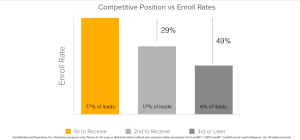Social Media can and should be a popular marketing tool as it appears to be:
- Relatively inexpensive (low production and space costs).
- Easy to manage (run internally with lower cost staff/your office Millennial).
- Reaching your best or most loyal customers (because they make the choice to follow you).
However, an effective or optimum use of social media can be even more positive and beneficial to the brand, customer loyalty, and sustained sales growth when used with a focus on customer engagement.
First, social media or social marketing (my preferred label because social media is a tool of marketing) can be an excellent vehicle because it does, in fact, reach people who are interested in your brand concept. They—not you—have made the choice to know more about you and what you are up to.
Second, social marketing can be seen as an electronic extension of direct marketing which always strove to get closer to the customer, to get more personal and build relationships.
And this is what gets me back to my earlier “however.” So much of what I see uses social marketing as a tool to exclusively promote by highlighting items and deals instead of creating stronger, more personal relationships.
How can social marketing be a more effective brand and sales builder? There are six basic steps, and Step Five may be the key to unleashing the full value of social marketing.

- Take the time to understand how your social marketing efforts will support your business plan. How will they contribute to the sales, brand building, and customer engagement so important to your business? What is social marketing’s business role and how would you characterize your long term expectations?
- Create and communicate a social marketing strategy that connects social marketing to the business plan. It should make it clear how each tool in the social marketing tool box is expected to contribute to the brand, sales growth, and an overall success. Does the strategy focus on communicating your brand’s values while listening to and connecting with your customers? Does it support engagement as well as promoting sales driving events? How will you measure social marketing’s effectiveness? What are your measured success results?
- Know your customers and their preferred social marketing vehicle. Because of its size and history, Facebook will be a dominant factor. However, remember that Instagram, for example, can be a favorite for restaurant customers because of its visual benefits. Usage of your social tools can vary by age, income, social groups, and the message itself. For some businesses, it might be important to keep a daily eye on Yelp!, Open Table or Google+. Take the time to pick the right tool for the targeted customer and the particular message.
- Make it clear who on your team is expected to do what and when, whether you are using external or internal resources. Establish the communication ground rules that reflect both your culture and brand (with any luck, the brand will speak to your culture!). Do they understand your brand’s positioning and values, competitive advantages? Will they be able to communicate or respond with the right voice?
- Create a social marketing calendar reflecting the inherent opportunity to leverage the social marketing tools
to build relationships, increase customer engagement, and enhance the customer experience. Make sure you decide in advance how many of your messages will be used for promotional purposes versus brand building and customer engagement (my suggestion is an 80/20 split, respectively). Use your relationship building to create dialogues and find out what your customers think about and want from you.As my father would have said, it is called social media for a reason.
- The last step might be the hardest to do consistently: use available analytics to understand your results and improve on them. You might want to consider outside experts in Google Analytics and the like because an investment in building a more effective social marketing effort could quickly pay for itself in increased revenues. But remember that a lot can be done on
your own if you give it the time, resources, and discipline it deserves.And then see how all of this is impacting your Steps One and Two so you can start over at a higher level with more engaged customers!
An improved social media experience delivering more customer engagement will build a stronger brand and more dynamic relationships creating increased loyalty, sales, and profits—well worth the time and effort.
(612)







